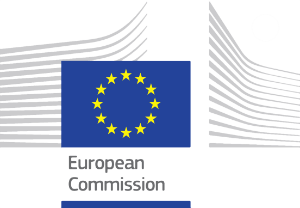A "digitorial" is a special type of online exhibition and multimedia format. It is educational and entertaining at the same time and mostly used to prepare for and follow up a visit to an exhibition. It provides additional information on the exhibition content. Digitorials were developed in Germany around ten years ago in cooperation between the Städel Museum, the Liebieghaus Skulpturensammlung and the Schirn Kunsthalle Frankfurt. All Digitorials have a similar structure, that can be filled with any multimedia content. This structure or frame can be used again and again. Therefore this best practice digital exhibition tool is a very mighty and sustainable format for museum content. Meanwhile "Digitorial" is a protected trademark but it has characterized the appearance and design of digital exhibitions in general for over ten years to this day.
Organisation in charge of best practice
Städel Museum
Location
Frankfurt am Main / Online
Dates
One up to 1,5 years for conception, programming, filling/implementation and then an editorial team that maintains the tool technically and constantly fills and supplements it with new content.
Description
Around ten years ago an online exhibition boom began. Almost every major museum wanted to go online with its exhibition content or its online collection. The Städel Museum in Frankfurt am Main was one of the first museums in the German-speaking world to have a strong online presence. In a cooperation between the Städel Museum, the Liebieghaus Skulpturensammlung and the Schirn Kunsthalle Frankfurt the trademark "digitorial" was invented which influenced the design and appearence of online or digital exhibitions until today.
A "digitorial" is a special type of online exhibition and multimedia format. It is educational and entertaining at the same time and mostly used to prepare for and follow up a visit to an exhibition. It provides additional information on the exhibition content. It can be used for free and does not need to be downloaded as it is a web format. It can be used on smart phone, tablet or PC.
All Digitorials have a similar structure, that can be filled with any multimedia content (text, images, video, audio). Some of its parts can be interactive for example, the text only moves into the image when the user scrolls. Or pulsating focus points on object images, where you get more information when you click on them.
This programmed structure or frame can be used by the museums (e.g. digital content curator) over and over again. Once programmed this web interface can be refilled and redesigned again and again via the backend. Therefore this best practice digital exhibition tool is a very mighty and sustainable format for museum content: Because it only needs to be programmed once and can then be used again and again for new exhibitions or focal points and its design can be adapted.
This "invention" for the digital communication of museum content with the help of storytelling and multimedia elements is now a central component of an approach that aims to convey content to visitors in an entertaining but also informative way. Education through "infotainment".

Links
Resources needed
As with most digital projects, a lot of resources (financial, personnel, time) are initially required. Programming services are needed for the technical components, but also a project manager who brings in the interests and ideas of the museum. As with most digital projects, a lot of resources (financial, personnel, time) are initially required. Programming services are needed for the technical components, but also a project manager who brings in the interests and ideas of the museum. The tool should be designed to be sustainable: This means adaptable (content / design), modular (structure) and openly accessible (e.g. web format). It can then be used for many museum contents.
Challenges encountered
The "digitorial" brand is protected. But there are many museums that have nevertheless set up their own online exhibitions in a very similar way under a different name, because it is simply a good and simple way of communicating exhibition content to visitors.
Evidence of success
The Städel museum uses the "digitorial" format since around ten years. For each exhibition or thematic focus in the museum a new digitorial is published online. It is constantly being revised and improved. New components and elements are added. The number of users has been stable for years. It was winner of the Grimme Online Award in 2015, one of the most important online awards in the german speaking countries.
Potential for transfer
High potential for transfer and imitation, because it is comparatively easy to implement and brings a lot to the museum. It is particularly suitable for exhibitions that have a longer duration as it helps to prepare or follow up the museum visit. But these formats are also useful and valuable for exhibition documentation purposes (what exhibition did the museum show in the last years?). Moreover the content and information is still accessible to interested visitors/users even after the exhibition has been dismantled already.
Further Information
About the digitorials: https://www.staedelmuseum.de/en/digital/digitorials
Get in touch
Click here to send us an email, if you have any question or comment on this best practice.

